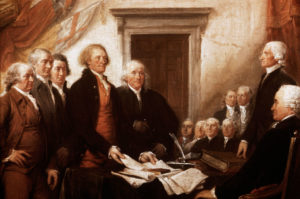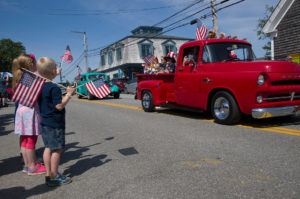-
Halloween
- The Story Behind Halloween – Lesson
- The Story Behind Halloween – Quiz
- Are You Too Old To Go Trick-Or-Treating? – Lesson
- Look out for the Blue Pumpkin – Lesson
- Is the White House Haunted? – Lesson
- Is the White House Haunted? – Quiz
- Mummies Discovered in Egypt – But That’s Nothing to Fear – Lesson
- Salem Witch Trials: When Being Called a Witch Meant Death – Lesson
- Halloween Around the World: It Isn’t Just Costumes and Candy – Lesson
- Halloween Around the World: It Isn’t Just Costumes and Candy – Quiz
-
Thanksgiving
- The Evolution of Thanksgiving – Lesson
- The Evolution of Thanksgiving – Quiz
- The Political Roots of Thanksgiving – Lesson
- The Political Roots of Thanksgiving – Quiz
- Turkey for Thanksgiving – But Why? – Lesson
- Turkey for Thanksgiving – But Why? – Quiz
- This Thanksgiving, Consider Helping the Less Fortunate – Lesson
-
Christmas
-
Easter
- Good Friday: Christ Carried Sin to the Grave – And Left It There – Lesson
- Good Friday: Christ Carried Sin to the Grave – And Left It There – Quiz
- Easter Traditions: From Rabbits to Egg Jarping – Lesson
- Easter Traditions: From Rabbits to Egg Jarping – Quiz
- Easter Monday and Egg Rolling at the White House – Lesson
- Easter Monday and Egg Rolling at the White House – Quiz
-
Federal Holidays and Observances
- New Year’s Day: Just as Political as Anything Else – Lesson
- This Presidents’ Day, Let’s Remember the Weird – Lesson
- Astounding Facts about US Presidents – Lesson
- Astounding Facts about US Presidents – Quiz
- Memorial Day: A Time of Honor and Respect – Lesson
- Memorial Day: A Time of Honor and Respect – Quiz
- From Decoration Day to Memorial Day – Lesson
- From Decoration Day to Memorial Day – Quiz
- Who Was the Poppy Lady, Moina Belle Michael? – Lesson
- Who Was the Poppy Lady, Moina Belle Michael? – Quiz
- The Origins of Flag Day – Lesson
- The Origins of Flag Day – Quiz
- America’s Flag – An Evolved Banner for an Ever-Changing Country – Lesson
- America’s Flag – An Evolved Banner for an Ever-Changing Country – Quiz
- Celebrating the 4th of July – Lesson
- Celebrating the 4th of July – Quiz
- Who Should We Thank for Labor Day? – Lesson
- Who Should We Thank for Labor Day? – Quiz
- Constitution and Citizenship Day – Lesson
- Constitution Day – The First Day of Constitution Week – Lesson
- Constitution Day – The First Day of Constitution Week – Quiz
- The Political Origins of Columbus Day – Lesson
- The Political Origins of Columbus Day – Quiz
- Columbus Day or Indigenous Peoples’ Day? – Lesson
- Columbus Day or Indigenous Peoples’ Day? – Quiz
- Veterans Day: A Day to Honor Those Who Served – Lesson
- Veterans Day: A Day to Honor Those Who Served – Quiz
- Marion Robert Goff: A Soldier’s Tale on D-Day – Lesson
- Marion Robert Goff: A Soldier’s Tale on D-Day – Quiz
- Independence Day: The History You Might Not Know – Lesson
- Independence Day: The History You Might Not Know – Quiz
-
Other Traditions
- Valentine’s Day Love Poems – Lesson
- Love Poems for Valentine’s Day – Lesson
- Who Was St. Valentine? – Lesson
- Who Was St. Valentine? – Quiz
- No Love for Valentine’s Day in the East – Lesson
- No Love for Valentine’s Day in the East – Quiz
- Beware the Ides of March – But Why? – Lesson
- Beware the Ides of March – But Why? – Quiz
- St. Patrick’s Day: A Celebration of the Irish – Lesson
- St. Patrick’s Day: A Celebration of the Irish – Quiz
- May Day: Dancing ‘Round the Maypole – Lesson
- May Day: Dancing ‘Round the Maypole – Quiz
- Cinco de Mayo: Celebrating Mexico’s Victory in Puebla – Lesson
- Cinco de Mayo: Celebrating Mexico’s Victory in Puebla – Quiz
- Mother’s Day: The Anti-War Effort Turned Holiday – Lesson
- Mother’s Day: The Anti-War Effort Turned Holiday – Quiz
- Father’s Day: More Than Just a Day for Ties – Lesson
- Father’s Day: More Than Just a Day for Ties – Quiz
- Presidential Fathers: Responsible for Their Kids and the Country – Lesson
- Presidential Fathers: Responsible for Their Kids and the Country – Quiz
- Proof of the Hanukkah Story Found? – Lesson
- Proof of the Hanukkah Story Found? – Quiz
- Roses Are Red, Violets Are Blue – April Celebrates Poetry, Too – Lesson
- Roses Are Red, Violets Are Blue – April Celebrates Poetry, Too – Quiz
Celebrating the 4th of July – Lesson

(Photo by Yana Paskova/Getty Images)
Fourth of July celebrations haven’t changed too much since the first, but do people remember the reason for the holiday?
It’s Independence Day, a time for fireworks, barbecues, parades, and celebrations. But what is the meaning behind this holiday? Why and how do we celebrate it? And did you know, if John Adams had had his way, we’d be honoring this day on July 2 instead of July 4?
If America had not won its independence from Great Britain, we would be living in a completely different country. The United States is a Democratic Republic, meaning we elect our representatives and presidents. But that’s only possible because of the American Revolution.
While the colonies were ruled by Great Britain, the people were ruled by a monarchy – a government where a king or queen inherits power because they are born into the royal family. King George III held power over the American colonies, and the people had no say in how they were ruled. The British already had a Parliament of elected representatives, but even this group was able to make laws affecting the lives of those living in America. Finally, the colonists decided it was time to make their own laws and guarantee their rights. The War of Independence began in 1775, but it wasn’t until a year later that the Founders officially declared their independence from Britain.

“Declaration of Independence” – detail of the painting by John Trumbell. (Getty Images)
On July 2, 1776, all the 13 colonies, except New York, voted to adopt the Declaration of Independence. It wasn’t signed until July 4, which is the day chosen for our national celebration. John Adams, however, wrote to his wife Abigail:
“The Second Day of July 1776, will be the most memorable Epocha, in the History of America. I am apt to believe that it will be celebrated, by succeeding Generations, as the great anniversary Festival… It ought to be solemnized with Pomp and Parade, with Shews, Games, Sports, Guns, Bells, Bonfires and Illuminations from one End of this Continent to the other from this Time forward forever more.”
Adams only got the date wrong. Today, we continue the tradition of “Pomp and Parade” and, of course, fireworks, which were first used to celebrate Independence Day on July 4, 1777, in Philadelphia. The Pennsylvania Evening Post reported on July 5, 1777:
“About noon all the armed ships and gallies in the river were drawn up before the city, dressed in the gayest manner, with the colors of the United States and streamers displayed.”

(Photo By Tom Williams/Roll Call/Getty Images)
The ships’ cannons, in honor of the 13 colonies that fought against the British, fired a 13-gun salute. Part of the festivities included an elegant dinner, a performance by a Hessian (German) band, and a military demonstration. “The evening was closed with the ringing of the bells,” the Post continued, “and at night there was a grand exhibition of fireworks (which began and concluded with 13 rockets) on the Commons, and the city was beautifully illuminated.” The Sons of Liberty also set off fireworks over Boston Common.
After the War of 1812, which also had the Americans fighting against England, even more fireworks were used to celebrate July 4. Not only were they easier to purchase by this time, but public safety concerns over using cannons and gunfire gradually put an end to those displays.
Independence Day did not become an official holiday until 1870, but traditions have not changed that much since the first celebration. Cities, homes, and buildings are decorated with flags and ribbons in red, blue, and white.
The Founding Fathers chose these colors to represent our flag and nation for very specific reasons:

(Photo by Joe Raedle/Getty Images)
Red represents valor, hardiness, courage, and the readiness to sacrifice. Sometimes, this color also symbolizes the blood shed by those who fought to protect our country and our freedom.
Blue is about justice for all, as well as perseverance and vigilance. It is meant to serve as a reminder that we must all remain strong and watchful.
White stands for innocence and purity. The Founding Fathers chose white to indicate that America is independent from other countries and holds true to its own values and beliefs.
The US Department of State defines the flag’s colors as “Old Glory Red,” “Old Glory Blue,” and “White.”
So, while you’re celebrating this holiday and watching the fireworks with friends and family, think about how different America would be now if the colonists had not fought for – and won – independence from England.
Happy Fourth of July!